“Women & Horses Revisited” at NSLM
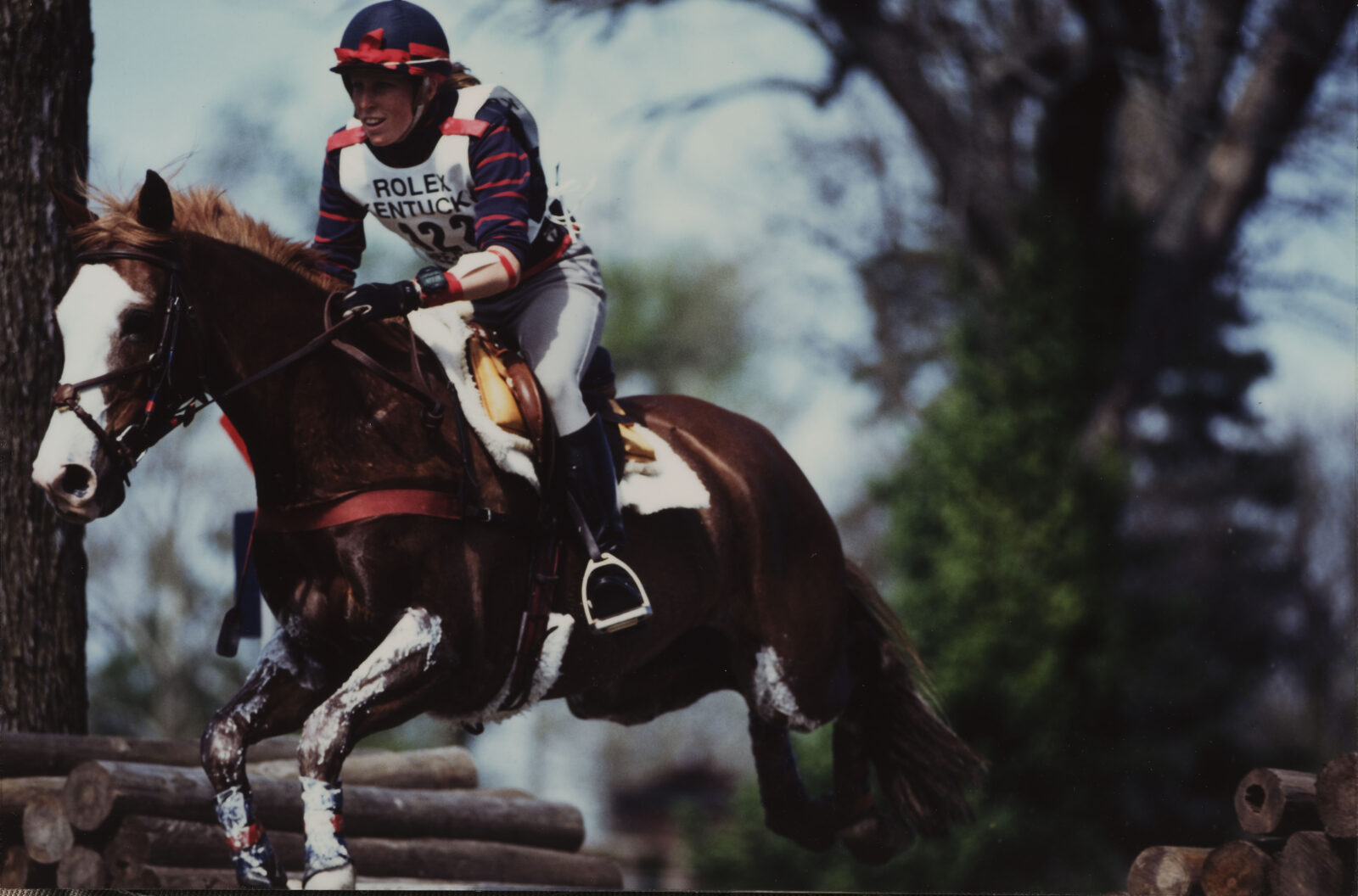
Written by Willow Podraza | Photos courtesy of the National Sporting Library & Museum
As you walk into “Women & Horses Revisited,” the National Sporting Library & Museum’s latest exhibition, you are immediately struck by the sheer abundance of photographs. One hundred fifty lacquer shadow boxes spill out from between bookshelves, into the Federal Room, down the staircase, and into the lower level of the library. Charles Rumph’s photography covers the breadth of the equestrian world and showcases women’s deep commitment to caring for and showing horses. His scenes range from the elegant dance of dressage to the gritty work performed by farriers, dentists, and veterinarians.
“’Women & Horses Revisited: Charles Rumph Photography’ is a unique opportunity to present the exhibition of 150 photographs throughout the Library,” says Head Curator Claudia Pfeiffer. Pfeiffer believes that “the images resonate with us just as much today as they did when Rumph created the comprehensive series capturing the variety of roles women had come to embody across the equestrian industry by 1996. It is exciting to be able to share Rumph’s groundbreaking project and examine what it represented then and now.” The exhibition is a revitalization of Rumph’s show “Women and Horses: A Celebration,” held at the International Museum of the Horse in Lexington, Kentucky, in 1996. The idea for the photographic series was conceived while Rumph was on assignment for The Washington Post at the Laurel Race Course in Maryland that same year. A panorama of the Lexington exhibition in the lower level of the National Sporting Library & Museum mirrors the room around it as large parts of the exhibition are curated according to the original exhibition at the Laurel Race Course show.
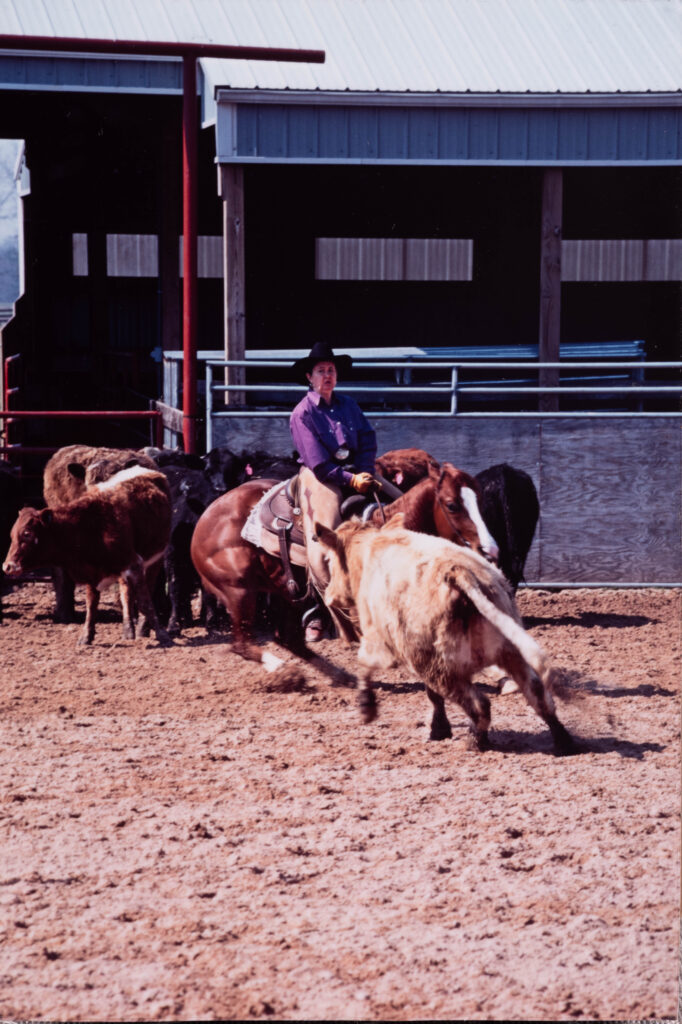
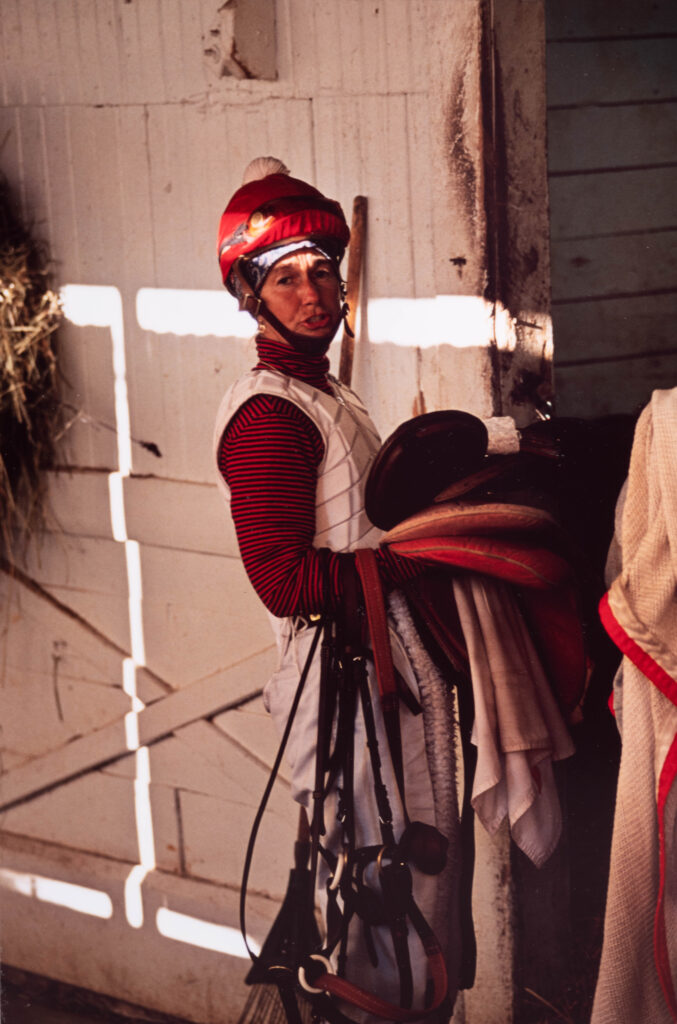
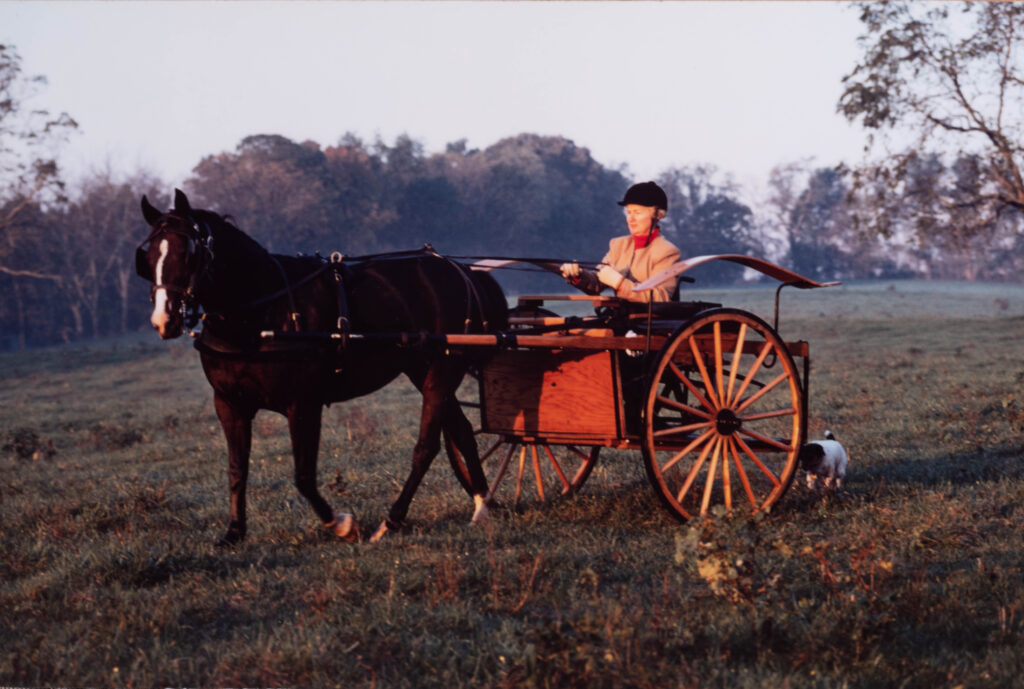
In Rumph’s photographs, women occupy positions of both labor and performance, and in many images, these roles are intertwined. Trainers endure mud and cold to prepare young riders for competition, while exercise riders wrangle unruly thoroughbreds before handing them over to jockeys. The zoomed in, closely focused frame in much of Rumph’s photography cultivates a deeply personal relationship between horse and rider. Rumph’s representations of women, as Diane Heilenman wrote in her 1996 review for the Courier-Journal, are neither “patronizing nor clichéd.” Rumph appreciates the contrast between women and the power of a rearing 1,000-pound animal, yet his subjects are not meek in the shadow of horses. In Rumph’s own words, the exhibit “illustrates the remarkable extent to which the horse relies on and looks to women.”
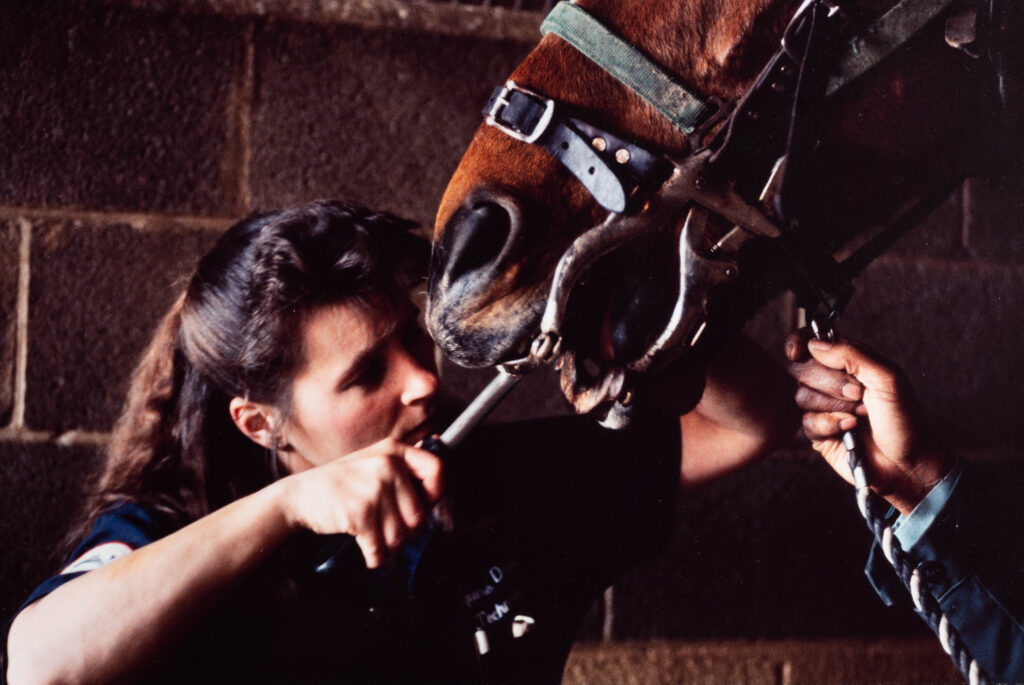
Several of Rumph’s photographs veer far from the crispness of traditional portraiture and embrace blur and smudges of color. These photographs, dubbed “abstractions,” recall Rumph’s earlier work, most notably his 1980 exhibition of abstract architectural photography at the Phillips Collection in Washington, D.C. His photographs of the Washington International Horse Show hum with energy, the painterly blur running down the center of the photograph translating the swift movement into the frame. Pfeiffer says that as a “highly trained photographer, [Rumph] also showcased the depth and breadth of his technical and artistic abilities, in many cases methodically pushing the limits of his cameras to diverge from a traditional photographic approach.” Rumph’s blurs are highly intentional. His technique is “especially evident in his ‘abstractions,’ in which he worked with slow shutter speeds to capture blurred motion,” says Pfeiffer.
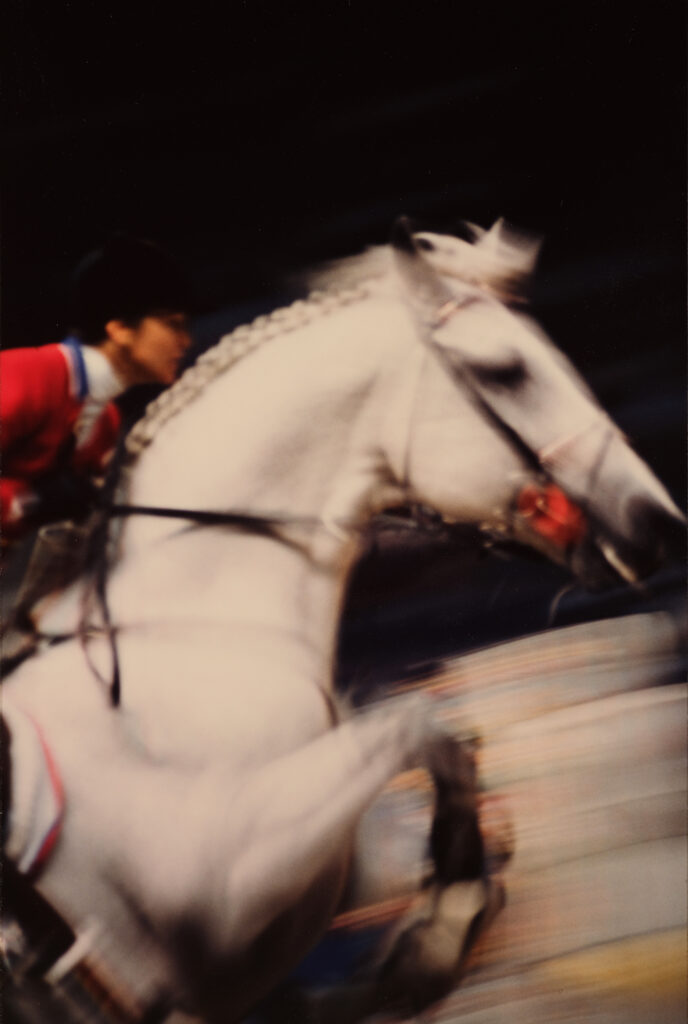
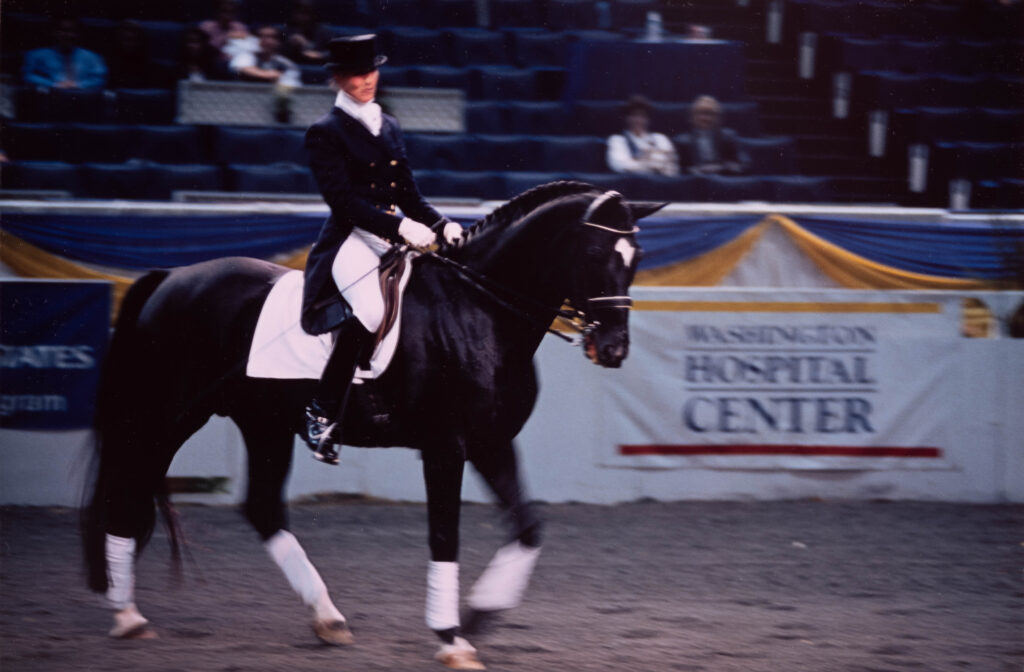
Two glass display cases in the principal room of the exhibition are filled with contact sheets, artist’s statements, letters, and undeveloped film. A look through the various documents and ephemera reveals Rumph’s sincere attention to detail and care for his subjects. In his artist’s statement written for the Lexington exhibition, Rumph writes, “I am attempting to truly celebrate the skill, daring, and competence of women in all the various ways in which they are engaged with horses.” Rumph’s deep appreciation for equestrians and their craft in part comes from his own history. Growing up in Texas, Rumph spent time working as an amateur rodeo rider. In two black-and-white reproduction photographs, Rumph himself is mounted and leading a horse.
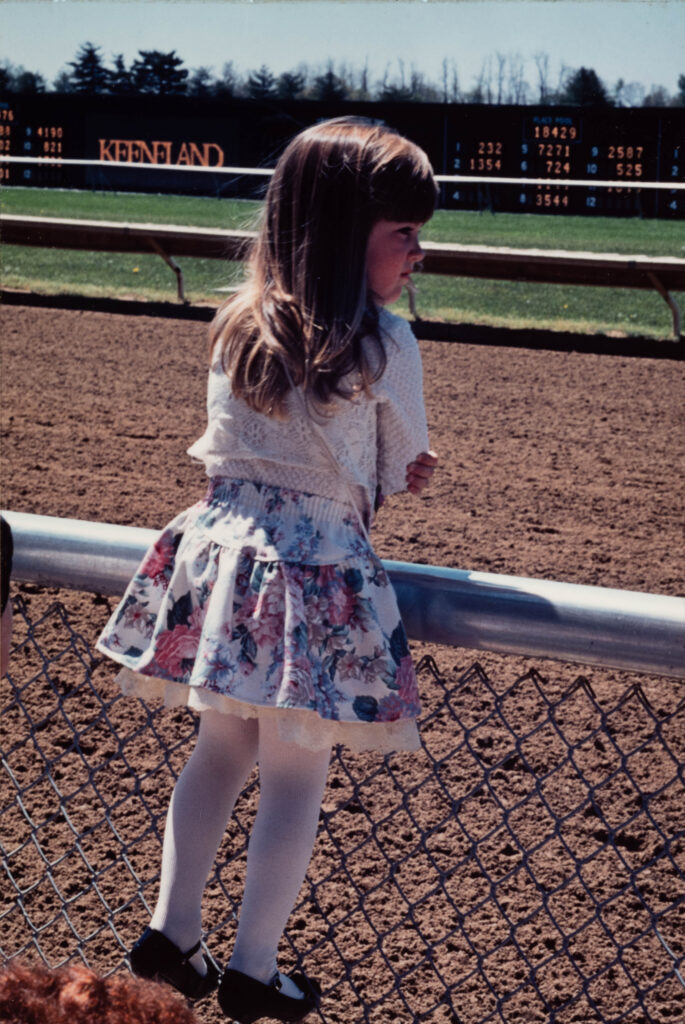
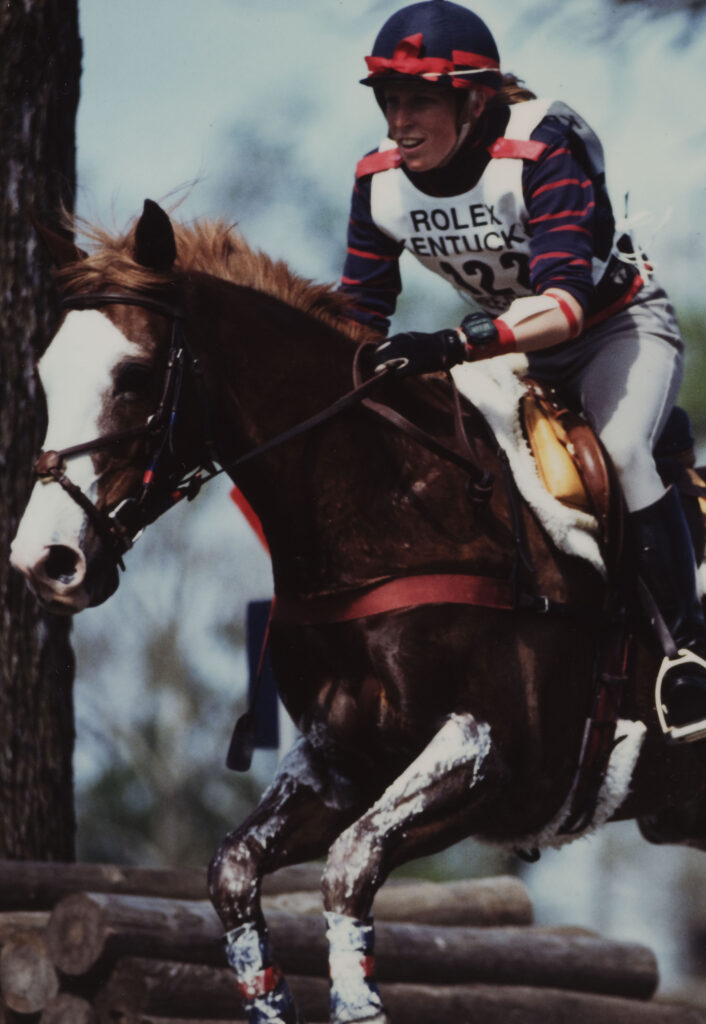
While women and horses cover the walls of the National Sporting Library & Museum, Rumph and his wife are at the heart of the exhibition. Pfeiffer explains that Rumph’s wife, Shirley Johnson, “generously donated the works of her husband to the NSLM after his passing in 2019. The NSLM acquired five of Rumph’s photographs to the permanent collection but is not able to house the entire body of work. Rumph’s wife understood this and donated the collection with the intention of benefitting the NSLM’s Art Acquisition Fund. This enabled us to develop the online silent auction in conjunction with the exhibition.” All of Rumph’s 150 photographs of women and horses are now digitized and live in the Charles Rumph Digital Archive, maintained by the NLSM, for all to enjoy. ML
“Women and Horses Revisited: Charles Rumph Photography” is on display at the National Sporting Library & Museum June 3, 2023, through September 17, 2023. Five of the photographs were accessioned into the permanent collection. The rest of Rumph’s body of work is being offered for sale in person at the Library and online at nslm.betterworld.org/auctions/women-horses-revisited-charles-r.
Published in the July 2023 issue of Middleburg Life.








